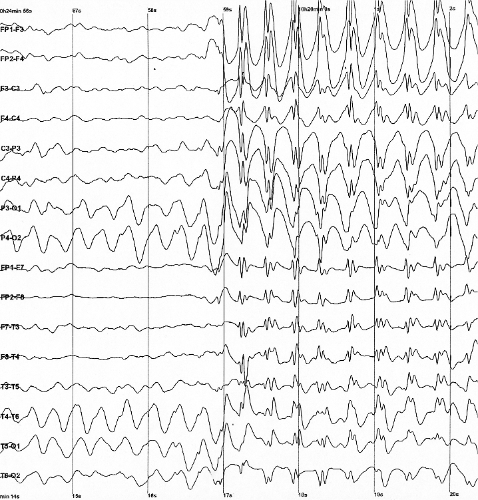Você sabia?
Você pode clicar duas vezes em uma palavra para procurá-la na TermGallery.
Você pode clicar duas vezes em uma palavra para procurá-la na TermGallery.
Significados de epilepsy syndrome em inglês

Human neurological disease causing seizures.
Paralysis of the arm, leg, and trunk on the same side of the body.
Sinônimos
Examples for "hemiplegia"
Examples for "hemiplegia"
1
Vascular complications occurred in three patients; hemiplegia developed in one of those.
2
Objective: Post-stroke shoulder pain is a common phenomenon in hemiplegia and impedes rehabilitation.
3
Recurrent strokes and alternating hemiplegia necessitated a right dural inversion 6 months later.
4
Anosognosia for hemiplegia is a common and striking disorder following stroke.
5
Directions regarding limb ataxia should be modified to indicate untestability due to hemiplegia.
1
However, previous reports of this phenomenon have examined patients with relatively large cerebral injuries (e.g., infantile hemiplegia) or limited sample sizes.
Uso de epilepsy syndrome em inglês
1
Background: Childhood absence epilepsy is a common generalized epilepsy syndrome characterized by childhood onset of frequent sporadic absence seizures.
2
We believe that frontal onset absences should be considered as a secondarily generalized epilepsy syndrome, originating in the frontal regions.
3
All cases reported in 2006-2008 were analyzed retrospectively; available clinical information was reevaluated and classified by seizure type and epilepsy syndrome.
4
Autosomal dominant nocturnal frontal lobe epilepsy (ADNFLE) is a familial partial epilepsy syndrome characterized by seizures suggesting a frontal lobe origin occurring predominantly during sleep.
5
Patients with a wide range of epilepsy syndromes and etiologies were registered.
6
Epilepsy syndromes and use of anti-seizure drugs were also evaluated.
7
However, little is known about the type and frequency of seizures and epilepsy syndromes following vaccination.
8
Patients with occipital epileptiform abnormalities presenting with ictal vomiting are often diagnosed as having vague migraine- epilepsy syndromes.
9
Our knowledge in the field of epilepsy has evolved since the discovery of new specific inherited epilepsy syndromes.
10
Thirty-one (12.6%) of 247 patients presented with various pediatric epilepsy syndromes.
11
It is likely that a number of genes coding for one or more ion channels may interact to produce specific epilepsy syndromes.
12
Infantile spasms, Dravet syndrome and myoclonic-astatic epilepsy are epilepsy syndromes for which ketogenic diet should be considered early in the therapeutic pathway.
13
Studies suggest that these products have positive effects in the treatment of chronic neuropathic pain, multiple-sclerosis-related spasticity, certain epilepsy syndromes and chemotherapy-related nausea and vomiting.
Translations for epilepsy syndrome
espanhol

